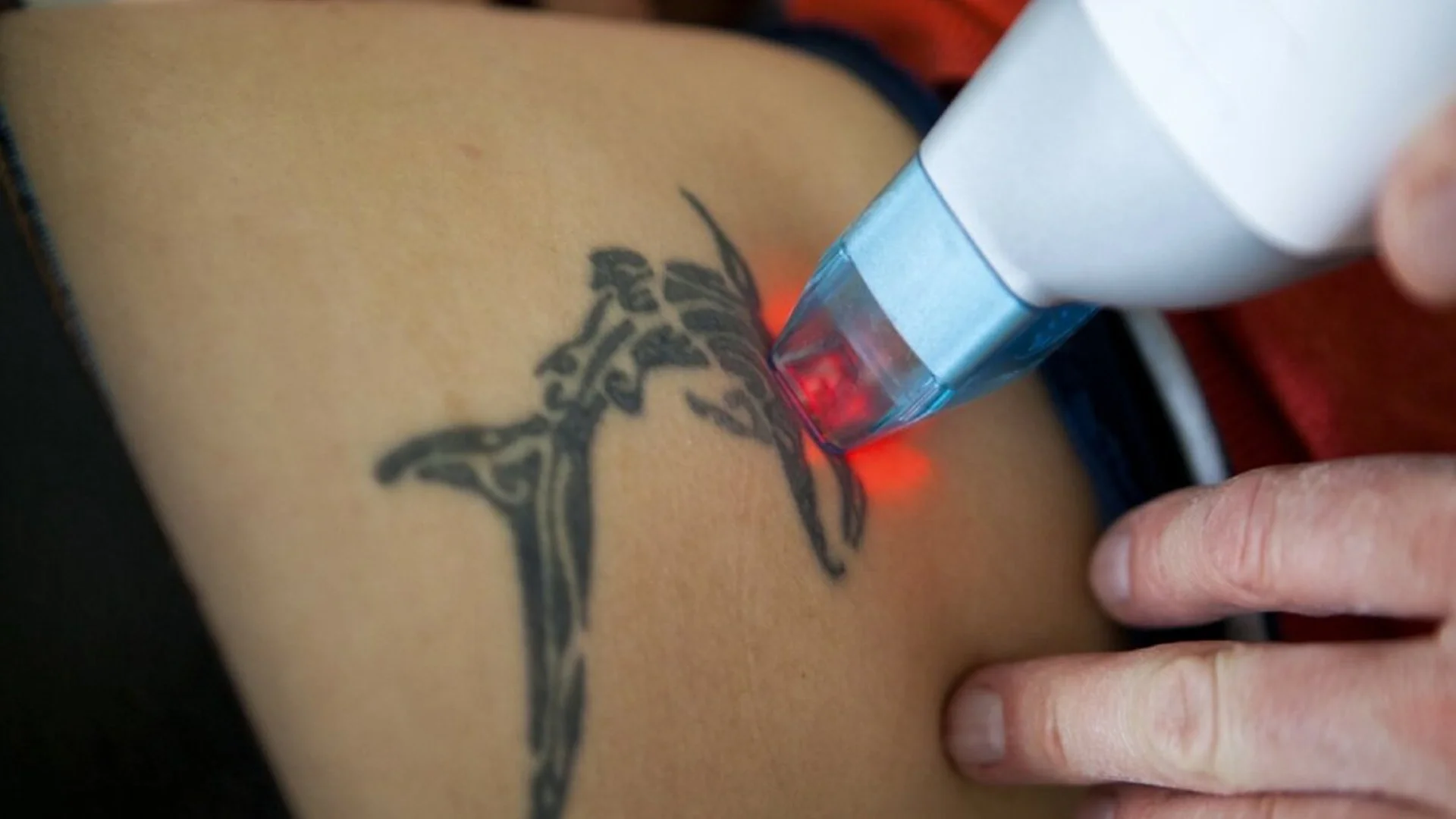Unveiling the Secrets of Laser Tattoo Removal: The Science Behind It All
Have you ever wondered how laser tattoo removal works? You’re not alone. The process might seem like magic, but it’s grounded in fascinating science. In this post, we delve into The Science Behind Laser Tattoo Removal: How It Actually Works a topic that’s crucial for anyone considering a fresh start with their body art. Whether you’re looking to lighten an old design or completely erase it, understanding the science can empower your decisions. At Ocean Ink’s Sutherland Shire Laser Tattoo Removal we see countless clients seeking clarity on how laser treatments can transform their skin. This blog will explore the mechanisms of laser technology, how it interacts with tattoo ink, and the role of your skin type in the removal process. We will also share insights into the number of sessions typically needed and what to expect during each treatment, ensuring you are well-informed before embarking on your tattoo removal journey.
Understanding The Science Behind Laser Tattoo Removal: How It Actually Works is essential for making informed choices about your body and its art. This knowledge not only demystifies the procedure but also helps set realistic expectations for results. As you navigate through this post, you’ll discover why our expertise at Ocean Ink positions us as a trusted partner on your tattoo removal journey, guiding you every step of the way.
If you’re ready to reclaim your skin and explore new tattoo possibilities, we encourage you to reach out to us for tailored advice and a consultation. You deserve a body that reflects who you are today, and understanding the science behind the process is your first step towards that transformation. So, let’s dive into the details and uncover the secrets of laser tattoo removal together.
The Science Behind Laser Tattoo Removal: How It Actually Works?
Laser tattoo removal is a sophisticated procedure that utilises advanced technology to break down the ink particles embedded in your skin. The Science Behind Laser Tattoo Removal: How It Actually Works revolves around the principle of selective photothermolysis, where specific wavelengths of light target the ink without harming the surrounding skin. This process is akin to a finely tuned instrument, where the laser emits quick bursts of energy that penetrate the skin and shatter the ink into smaller particles, allowing your body to naturally expel them over time.
The key components of this process include the type of laser used, the wavelength of the light, and the length of each pulse. Different colours of ink absorb light at various wavelengths, which is why multiple tattoo removal sessions may be needed to address all the colours in a tattoo. For instance, a black ink tattoo typically responds well to a variety of laser wavelengths, making it easier to remove than tattoos with vibrant colours. At Ocean Ink, we tailor our approach to suit your unique tattoo and skin type, ensuring optimal results throughout every stage of your tattoo removal sessions.
In the context of Sutherland Shire Laser Tattoo Removal, understanding The Science Behind Laser Tattoo Removal: How It Actually Works is essential for anyone considering this service. It allows you to make informed decisions about your tattoo removal journey, whether you're looking to lighten a tattoo for a cover-up or aiming for complete removal. We believe in empowering you with knowledge so that you can feel confident in your choices.
Many misconceptions exist regarding the pain and effectiveness of laser tattoo removal. While some might fear it will feel like getting the tattoo done again, modern technology has greatly improved the comfort levels during sessions. Additionally, the notion that tattoos can be removed in one session is a common myth; multiple visits are often necessary to achieve the best results. At Ocean Ink, we guide you through each step of the process, ensuring you understand what to expect and how to care for your skin post-treatment. The Science Behind Laser Tattoo Removal: How It Actually Works not only highlights the remarkable capabilities of modern laser technology but also underscores our commitment at Ocean Ink to provide safe, effective, and personalised tattoo removal services. We strive to help you reclaim your skin and express your individuality, free from unwanted ink.
Essential Terms to Understand Laser Tattoo Removal
Before diving into the details of laser tattoo removal, it’s crucial to familiarise yourself with some key terms that will enhance your understanding of the process and its science. Here are some essential terms that will help you navigate the world of tattoo removal more effectively.
Laser
A laser (Light Amplification by Stimulated Emission of Radiation) is a device that emits focused light energy, which can be used to break down ink particles in the skin during tattoo removal procedures. Its precision is what makes laser technology highly effective in tattoo removal, targeting only the ink while minimising damage to surrounding skin tissue. This is fundamental in understanding how tattoo removal works, as the laser's specific wavelength is chosen to target different ink colours effectively, making it an ideal choice for various tattoo types and colours.
Melanin
Melanin is the natural pigment found in the skin that gives it colour and helps protect it from UV radiation. Understanding melanin is important in laser tattoo removal because the amount of melanin in your skin can affect how the laser interacts with both your skin and the tattoo ink. For instance, individuals with darker skin tones may require different laser settings to avoid damaging the surrounding skin while effectively targeting the tattoo ink.
Q-Switched Laser
A Q-switched laser is a type of laser that produces short, high-energy pulses of light, making it particularly effective for tattoo removal. This technology is crucial because it breaks down the ink particles into smaller pieces that can be absorbed and eliminated by the body’s immune system. Knowing about Q-switched lasers helps you appreciate the advanced technology used at Ocean Ink to achieve effective results in tattoo removal.
Tattoo Ink
Tattoo ink is a pigment that is injected into the skin to create a design. The composition of the ink, including its colour and the size of its particles, plays a significant role in how well the tattoo can be removed. Understanding tattoo ink is important as different inks react differently to laser treatments, influencing the number of sessions required for effective removal.
Photothermolysis
Photothermolysis is the process by which laser energy is absorbed by the tattoo ink, leading to its fragmentation and subsequent removal by the body. This concept is central to The Science Behind Laser Tattoo Removal: How It Actually Works, as it explains the mechanism through which lasers effectively target and eliminate tattoo pigments from the skin.
Aftercare
Aftercare refers to the post-treatment care that is necessary to ensure proper healing of the skin following a laser tattoo removal session. It is vital because proper aftercare can significantly impact the outcome of the removal process, reducing the risk of complications and promoting better healing. Understanding aftercare is essential for you to achieve the best possible results after your sessions.
Ink Fading
Ink fading is the gradual lightening of a tattoo as a result of laser treatments. This process is important because it indicates the effectiveness of the laser in breaking down the ink particles, allowing for either complete removal or preparation for a cover-up. Recognising the stages of ink fading can help you manage your expectations throughout the removal process.
By familiarising yourself with these terms, you’ll not only enhance your understanding of The Science Behind Laser Tattoo Removal: How It Actually Works but also empower yourself to make informed decisions about your tattoo removal journey. At Ocean Ink, we’re dedicated to guiding you through every step of the process, ensuring you feel confident and knowledgeable.
Your Questions About Tattoo Removal Answered
We understand that you may have many questions about the process and effectiveness of laser tattoo removal. Below, we've compiled some of the most frequently asked questions to help you better understand <strong>The Science Behind Laser Tattoo Removal: How It Actually Works
-
The laser tattoo removal process involves using specific wavelengths of light to target and break down the ink particles in your skin. The laser energy is absorbed by the ink, causing it to fragment into smaller particles that can be naturally eliminated by your body over time.
-
While pain tolerance varies from person to person, many clients describe the sensation as similar to having a rubber band snapped against the skin. At Ocean Ink, we prioritise your comfort and can provide numbing creams to help minimise any discomfort during the procedure.
-
The number of sessions required for complete tattoo removal can vary based on several factors, including tattoo size, ink colour, and your skin type. Typically, you can expect to need between 5-10 sessions for optimal results, but our professionals will provide a personalised assessment during your consultation.
-
Most tattoos can be effectively treated with laser removal, although some colours may be more challenging to eliminate. Darker inks, such as black and blue, tend to respond best, while lighter colours may require additional sessions or might not be completely removable. Our experts at Ocean Ink will evaluate your tattoo during a consultation to determine the best approach.
-
After a laser tattoo removal session, you might experience some redness, swelling, or blistering in the treated area. This is generally temporary, and downtime is minimal. Most clients can return to their regular activities shortly after treatment, but we recommend avoiding sun exposure and following aftercare instructions for optimal healing.
-
While scarring is not common, it can occur depending on your skin type and how your body reacts to the treatment. Our experienced team at Ocean Ink takes precautions to minimise the risk of scarring and will guide you through aftercare to ensure the best possible outcome.
-
Yes, once your tattoo has fully faded or been removed and your skin has healed completely, you can consider getting a new tattoo in the same area. We recommend waiting at least a few months post-treatment to ensure your skin is ready for new ink.
We hope these FAQs have clarified some of your concerns regarding The Science Behind Laser Tattoo Removal: How It Actually Works. If you have more questions or wish to book a consultation, feel free to reach out to us at Ocean Ink
In Summary: Understanding Tattoo Removal for a Fresh Start
In conclusion, we’ve explored The Science Behind Laser Tattoo Removal: How It Actually Works, shedding light on the intricate process that enables the effective fading and removal of unwanted tattoos. From understanding how laser technology targets ink particles to the necessity of multiple sessions depending on various factors, this knowledge empowers you to make informed decisions about your body art.
Grasping the mechanics of laser tattoo removal is essential for anyone considering a change in their tattoo landscape. Whether you're looking to lighten an existing tattoo for a cover-up or seeking complete removal, knowing how the procedure works can alleviate concerns and enhance your confidence in the process. With this understanding, you're better equipped to tackle the journey of transforming your tattoos into something that resonates with your current self.
If you find yourself contemplating a new direction for your body art, remember that our skilled artists at Ocean Ink are here to assist you. We specialise in not only custom tattoos but also in providing expert laser tattoo removal services tailored to your individual needs. With sessions starting at just $50, we make it accessible for you to achieve the change you desire. We encourage you to reach out if you have questions or wish to explore our services further. Visit our contact page to connect with us. Let’s work together to help you love your body art once again, whether through removal, lightening, or a stunning cover-up that tells your unique story.

